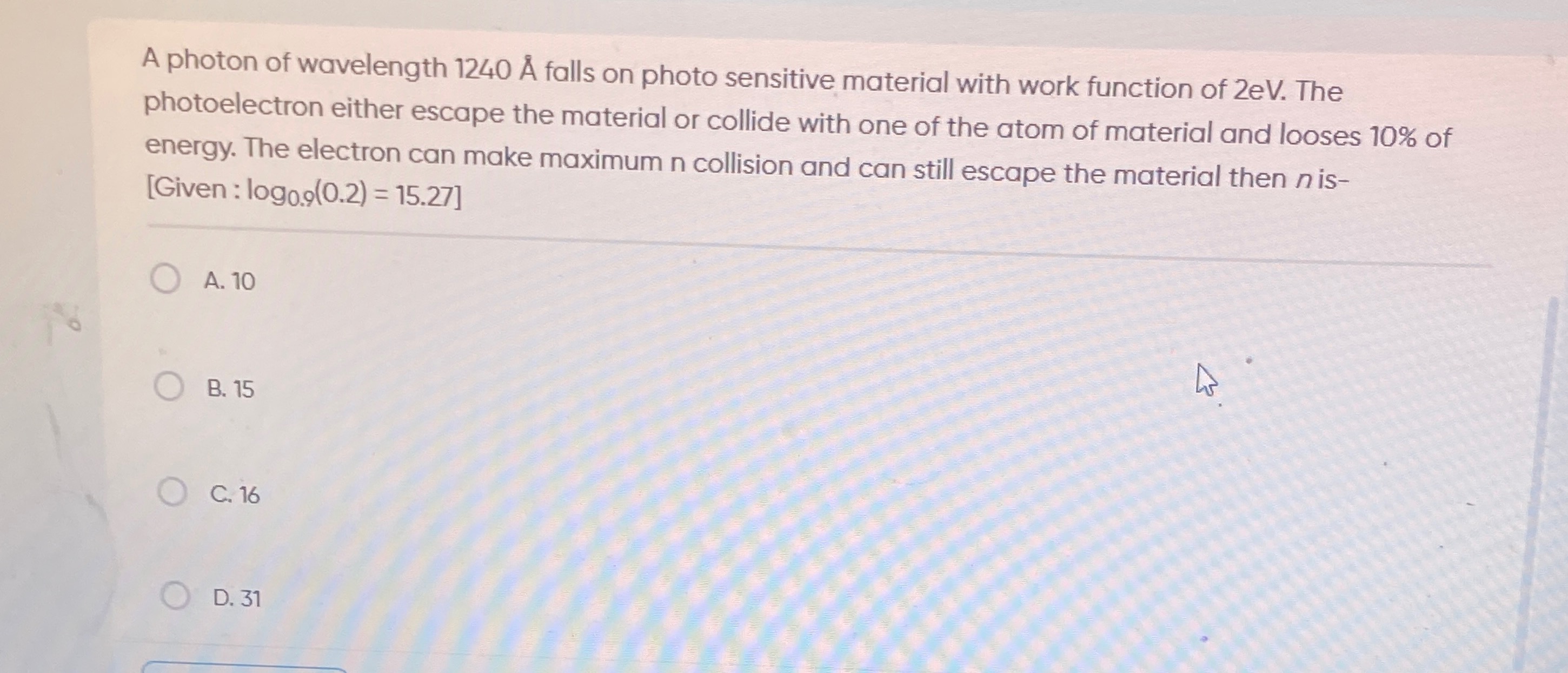Question
Question: A photon of wavelength 1240 Å falls on photo sensitive material with work function of 2eV. The photo...
A photon of wavelength 1240 Å falls on photo sensitive material with work function of 2eV. The photoelectron either escape the material or collide with one of the atom of material and looses 10% of energy. The electron can make maximum n collision and can still escape the material then n is- [Given : log0.9(0.2)=15.27]

10
15
16
31
10
Solution
-
Photon Energy Calculation: The energy of the incident photon is given by E=λhc. Using the formula E=λ12400 (where E is in eV and λ is in Å): Ephoton=1240 A˚12400 eV A˚=10 eV
-
Maximum Kinetic Energy of Photoelectron: According to Einstein's photoelectric equation, KEmax=Ephoton−ϕ. Given ϕ=2 eV: KEmax=10 eV−2 eV=8 eV
-
Energy Loss in Collisions: After each collision, the electron retains 90% of its energy. After k collisions, the kinetic energy KEk is: KEk=KEmax×(0.9)k
-
Condition for Electron Escape: For the electron to escape, its kinetic energy must be at least equal to the work function (ϕ). The problem states that the electron can make a maximum of n collisions and still escape. This means: KEn≥ϕ KEmax×(0.9)n≥ϕ Substituting the values: 8×(0.9)n≥2 (0.9)n≥82 (0.9)n≥0.25
-
Determining the Maximum 'n' from Options: We need to find the largest integer n from the given options that satisfies (0.9)n≥0.25. Let's check each option:
- A. n = 10: (0.9)10≈0.3487. Since 0.3487≥0.25, this is a possible value for n.
- B. n = 15: (0.9)15≈0.2059. Since 0.2059<0.25, this is not a possible value for n.
- C. n = 16: (0.9)16≈0.1853. Since 0.1853<0.25, this is not a possible value for n.
- D. n = 31: (0.9)31≈0.0386. Since 0.0386<0.25, this is not a possible value for n.
Only n=10 satisfies the condition. Therefore, it is the maximum possible value among the given options for which the electron can still escape.
(Note: Mathematically, solving (0.9)n≥0.25 yields n≤log0.9(0.25). Using the given log0.9(0.2)=15.27 and change of base, log0.9(0.25)≈13.15. This implies the maximum integer n is 13. However, 13 is not an option. Given the options, n=10 is the only one that satisfies the condition.)
